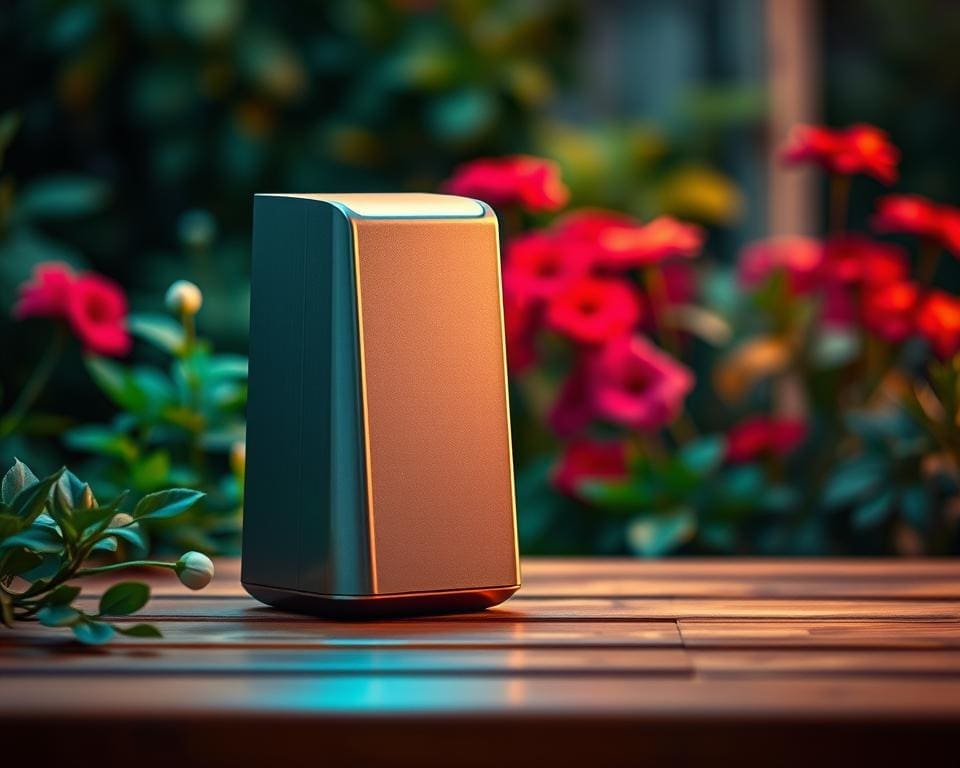As any dedicated gardener knows, the presence of pests can pose a significant threat to the health and beauty of our beloved gardens. With the increasing concerns surrounding garden pest management, finding the right solutions has never been more important. So, what is the best gadget for repelling garden pests? Today, numerous electronic pest control devices are available, offering innovative ways to protect plants without the need for harmful chemicals. Embracing these garden pest repellents not only nurtures our green spaces but also supports a more sustainable approach to gardening.
Understanding Garden Pests and Their Impact
Gardening enthusiasts face a myriad of challenges in maintaining their prized gardens. Amongst these challenges, the presence of pests stands out as a major concern. By identifying the common types of garden pests and understanding how pests affect plant health, gardeners can take proactive measures to protect their green spaces.
Common Types of Garden Pests
Gardeners often encounter several types of pests, each posing unique threats to plant health. Some of the most prevalent types include:
- Aphids
- Slugs
- Beetles
- Spider mites
- Whiteflies
These pests can rapidly multiply, making timely identification crucial for effective control.
How Pests Affect Plant Health
Pests play a detrimental role in the overall vitality of plants. Not only do they sap essential nutrients, but they also open pathways for diseases, leading to further complications. They can disrupt the delicate process of pollination, essential for flower and fruit development. Understanding how pests affect plant health empowers gardeners to tackle these threats before they escalate.
Indicators of Pest Infestation
Recognising the signs of pest invasion is vital for maintaining a healthy garden. Common indicators include:
- Wilting or discoloured leaves
- Holes punctured in foliage
- Visible insects on plants
By staying vigilant and attuned to these signs, gardeners can implement appropriate pest control strategies quickly.

What is the best gadget for repelling garden pests?
In the quest for a thriving garden, utilising the right gadgets can transform pest management into a seamless experience. Today’s electronic pest control devices boast innovative features that address the diverse needs of gardeners eager to keep pests at bay. Understanding these advancements aids in choosing an effective garden pest repellent tailored to individual gardening environments.
Innovative Features of Modern Gadgets
Modern garden pest repellents integrate various technologies, enhancing their effectiveness. Features include:
- Programmable Settings: Tailoring the operation schedule for maximum efficiency against specific pests.
- Solar Power Capabilities: Eco-friendly options that harness sunlight, reducing energy consumption and costs.
- Dual-Technology Functionalities: Combining traditional methods with ultrasonic pest repellers for broader coverage.
These innovations promote not only effectiveness but also flexibility, enabling users to adapt their pest control strategies to changing conditions.
Comparative Overview of Popular Options
An array of products exists on the market, catering to various preferences and needs. Notable options include:
- Ultrasonic Pest Repellers: Emitting high-frequency sounds that deter pests without harming them, making these devices particularly appealing to eco-conscious gardeners.
- Solar-Powered Devices: These electronic pest control devices offer convenience and sustainability, perfect for those seeking environmentally friendly solutions.
- Traditional Insect Repellents: While effective, these often involve chemicals that may not align with all gardeners’ values or practices.
The effectiveness and user satisfaction of these varied options should be carefully considered, aiming for an informed choice in garden pest management.
Ultrasonic Pest Repellers: How They Work
The increasing demand for effective pest control solutions leads many garden enthusiasts to consider ultrasonic pest repellers. These innovative devices harness technology to create a more welcoming outdoor environment by deterring unwanted pests.
Benefits of Ultrasonic Technology
Ultrasonic pest repellers use high-frequency sound waves that are inaudible to humans. These sound waves disrupt the normal behaviour of common pests, making areas less hospitable. The benefits of ultrasonic technology include:
- Non-toxic nature, ensuring safety for both pets and humans.
- Ease of use, requiring minimal setup and maintenance.
- Wide coverage areas, effectively protecting many garden spaces simultaneously.
- Cost-effective, with many models offering long-term pest control without the need for toxic chemicals.
Debunking Myths About Ultrasonic Devices
Despite their growing popularity, misconceptions about ultrasonic devices persist. Some believe they are ineffective or have a limited lifespan. In fact, when placed strategically, an ultrasonic pest repeller can significantly aid in deterring pests. Regular maintenance enhances its performance, ensuring a long-lasting pest control solution. Understanding the science behind these devices can highlight their role as a vital resource in maintaining a healthy garden.
Solar Powered Pest Repellers: Eco-Friendly Solutions
As gardeners strive for sustainable practices, solar powered pest repellers emerge as a compelling option. These innovative devices harness solar energy to provide a reliable deterrent against unwanted pests while promoting eco-friendly pest control methods. Understanding how these tools operate unveils their true potential for anyone passionate about gardening.
How Solar Powered Devices Operate
Solar powered pest repellers utilise photovoltaic cells to convert sunlight into electricity. This energy powers various components within the device, often emitting ultrasonic sounds or vibrations that deter pests from invading your garden. With no requirement for external power sources, these gadgets function efficiently throughout the day, often switching to standby mode at night to conserve energy.
Advantages of Going Solar in Pest Control
Adopting solar powered pest repellers brings numerous advantages that align with eco-friendly pest control objectives:
- Cost-effective: While the initial investment may be higher, the elimination of operating costs associated with traditional devices makes these solutions an economical choice over time.
- Environmentally friendly: Solar devices reduce dependency on electrical grids, helping to lower carbon footprints and contributing to a more sustainable gardening practice.
- Minimal maintenance: Most solar powered devices require little upkeep, enabling gardeners to focus on growth rather than maintenance.
- Continuous operation: These gadgets ensure constant protection against pests, freeing gardeners from the need to charge or replace batteries frequently.
Humane Pest Deterrents for the Garden
For gardeners mindful of ethical considerations, humane pest deterrents present a compassionate alternative to traditional pest control methods. These outdoor pest repellents not only protect your plants but also play a vital role in preserving local ecosystems. One effective approach is to utilise companion planting, where certain plants naturally repel specific pests while attracting beneficial insects, thus fostering a balanced environment.
Another method involves the use of essential oils, which can be an effective outdoor pest repellent. Oils such as peppermint, lavender, and eucalyptus emit scents that deter unwanted visitors without harming the surrounding wildlife. Additionally, installing barriers like netting or row covers can safeguard your crops while allowing natural pollinators to thrive, striking a balance between protection and biodiversity.
Embracing these humane pest deterrents demonstrates a commitment to protecting not just your garden but the ecosystem as a whole. By opting for natural deterrent methods, gardeners can create a flourishing sanctuary that nurtures both plants and beneficial creatures alike. This kind of conscientious gardening aligns beautifully with the UK’s efforts to safeguard biodiversity, ensuring a healthy and vibrant garden for generations to come.









